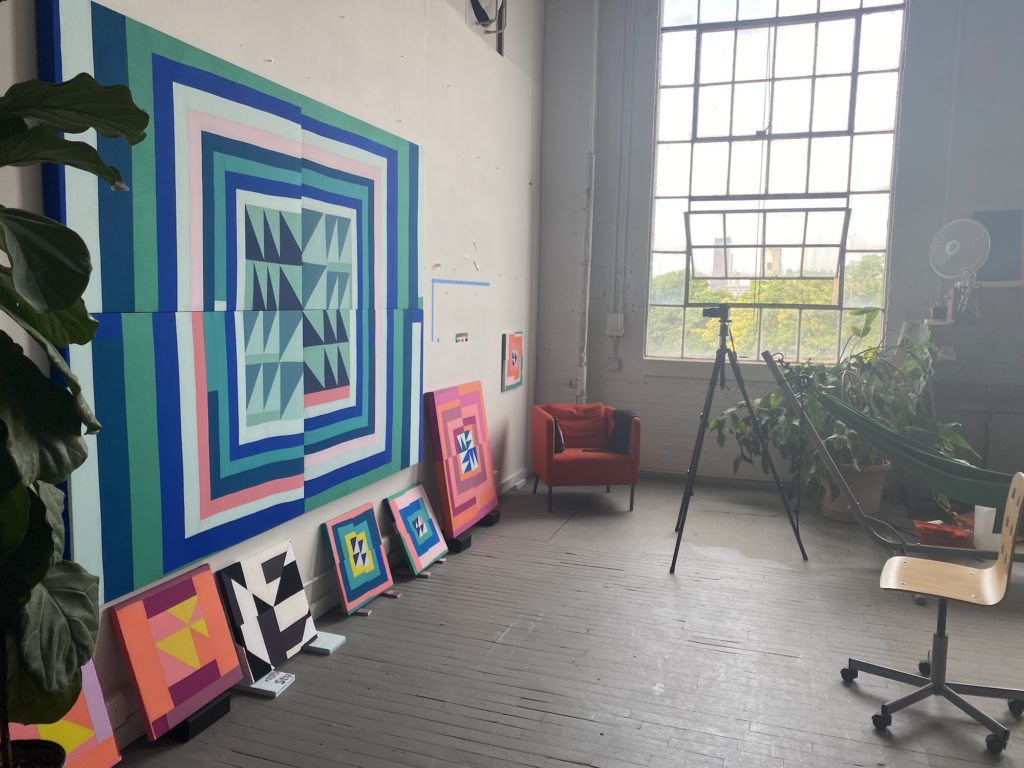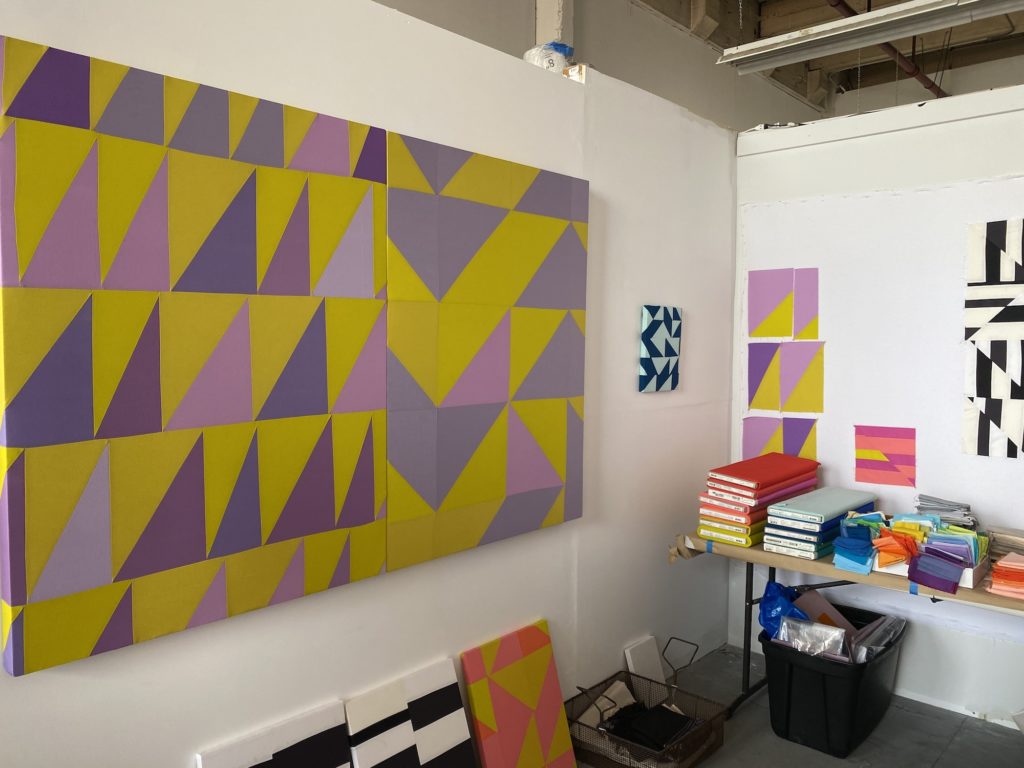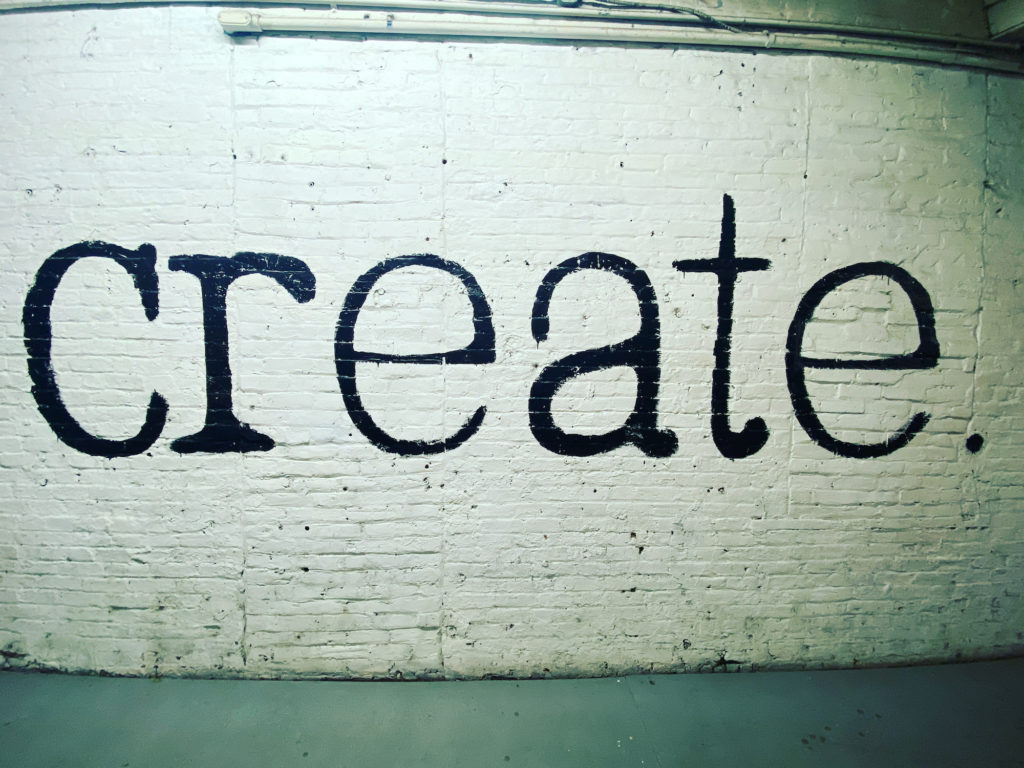When I first met Heather Jones, years ago, she was creating quilt patterns and I was enamored by her oversized-quilt-block style. I bought a couple of her patterns, chatted with her at Quilt Market when we’d see each other, and followed along with her career trajectory via Instagram.
Over the past few years, I’ve watched as she made the transition from pattern designer to textile artist, intrigued by both her technique and her path.
I realized we would pass near Heather’s studio in Dayton, Ohio on our travels so I reached out and she was kind enough to let me visit her. She has a fabulous studio where she shares space with Divisible Projects, a joint effort with her husband, Jeffrey Cortland Jones.

I don’t know a lot of folks personally who work in textiles as their art form, so getting the chance to talk to her was ridiculously fulfilling. Coming from an art background, moving through the craft of quiltmaking and back into art as a textile artist in her own right, Heather’s perspective is different than mine. I come from it from the craft side and trying to find my feet in it as an art form.
To me, this is a fascinating difference and one that I’ve discussed with Hawke numerous times. I have never been one to just draw something. I don’t doodle. I don’t have a drive to pick up a pencil and sketch something. Ever. I’ve never taken an art class. All of this to say, that creating a piece that “says something” isn’t how I’ve worked.


I come from the craft side, which means I prefer to follow sewing patterns and sometimes even (gasp!) buy quilt kits. It isn’t that I’m not creative, I’ve realized, but rather that I haven’t been taught how to translate my thoughts into art. This past year I’ve been trying to learn more about this and push myself to understand this transition and what I want from it.
This fed right into the conversation that Heather and I had. I picked her brain on how she works with the fabrics and what the overarching goal is. I got to ponder my obsession with perfection and how it keeps me from exploring techniques the way I truly want to. She shared how the imperfections and inability to control exactly what the fabric does is what brings joy to the work.
This rumination about perfection and control is really what stuck with me. We spoke about the Gees Bend quilters and the imperfectly perfect quilts that have come from them. About the quilts that have just a few blocks with a different background because the maker ran out of fabric. The wavy lines that come from stretching a quilt block when you didn’t account for the grainline.


In that discussion I found the root of my struggle to feel like a textile artist of any sort. How do I start if I give up the drive for perfection and control?
The morning convo with Heather inspired me in ways that I hadn’t expected and made me think about things I hadn’t really thought about. I see her art with new eyes, new admiration and it inspires me.
Go. Do. Make. Art.



